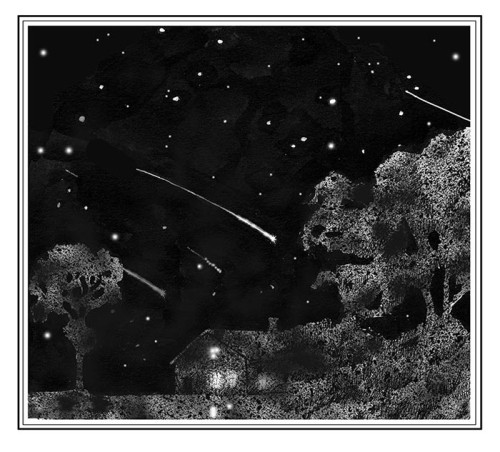
We call them shooting stars, and they never fail to make us catch our breath in surprise and wonder. But they’re not stars at all. Those bright, brief streaks across the night sky are meteors. And, clear skies permitting, the next few months bring three excellent chances to see batches of them.
Meteors are debris left by disintegrating comets. Comets are mostly rock and ice, and once they enter the inner solar system, their orbits may bring them close enough to the sun to heat up, causing the ice to melt and vaporize. Particles of rock fall away from the nucleus of the comet when this happens. When the earth collides with the trail of this debris, the particles burn up in our atmosphere.
One of the best things about meteor viewing is that all you need is a clear night and a chair or blanket. In fact, binoculars and telescopes are a hindrance as they restrict your field of view. Celestial expertise is also not a requirement.
“Folks of all ages and backgrounds can get involved, stoking the natural wonder that I think we all have about the nighttime sky,” explained observational astronomer Elizabeth McGrath, an assistant professor at Colby College in Waterville, Maine. “Watching a meteor shower reminds us that we are part of something much larger than ourselves.”
The Orionid, Draconid, and Leonid meteor showers, named for the constellations Orion, Draco, and Leo, will all take center stage over the next two months. The Draconid shower peaks on October 7-9 this year, and is best viewed between sunset and nightfall, which makes it notable. (Most meteor displays are best after midnight.) With luck, you may see 10-20 meteors per hour. Moonlight can foil meteor watching plans, but a new moon on October 13 will make for good conditions.
The Orionid shower, resulting from Halley’s Comet, is active October 4-November 14, and peaks on October 21-22. The best viewing is from midnight to dawn, when you may see up to 20 flashes per hour. In some years, the Orionids have produced 50 to 75 meteors per hour. Meteors in this shower often have persistent trails, and some may be exceptionally bright.
The Leonid shower peaks November 17-18, and the best viewing will be pre-dawn. The crescent moon will set in the evening, leaving the sky dark enough to see 15 to 20 meteors an hour. Leonids are often very bright with long trails.
Although each meteor shower streams from a particular area of the sky, known as its radiant point, that does not mean you need to look in its direction. Look directly overhead, advised Fairbanks Museum and Planetarium educator Bobby Farlice-Rubio, since that is where they are closest to the observer and will appear brightest.
And don’t give up too soon. “Wait at least 20 to 30 minutes. It takes some time for your eyes to adjust to the darkness in order to be able to spot the fainter meteors,” Professor McGrath advised. “And if you have a camera that can take long exposures, longer than one or two minutes, set it up on a tripod. You’ll be surprised what you get. You may just get one of the meteors streaking across the frame.”
Chances are good that you live within a couple of hours of an astronomical observatory. New Hampshire and Vermont each have two, and they host public events and star parties. The Northern Skies Observatory in Peacham, Vermont, hosts a free star party on October 16. Staff members are excellent resources.
There are also websites that offer valuable information for amateur astronomers. Professor McGrath recommends space.com and stardate.org, while Farlice-Rubio likes spaceweather.com and skyandtelescope.com. The American Meteor Society and your local TV station are also guides for weather and space conditions.
So stay up late, get yourself a blanket and a midnight snack, and head for someplace very dark. And keep your fingers crossed.

